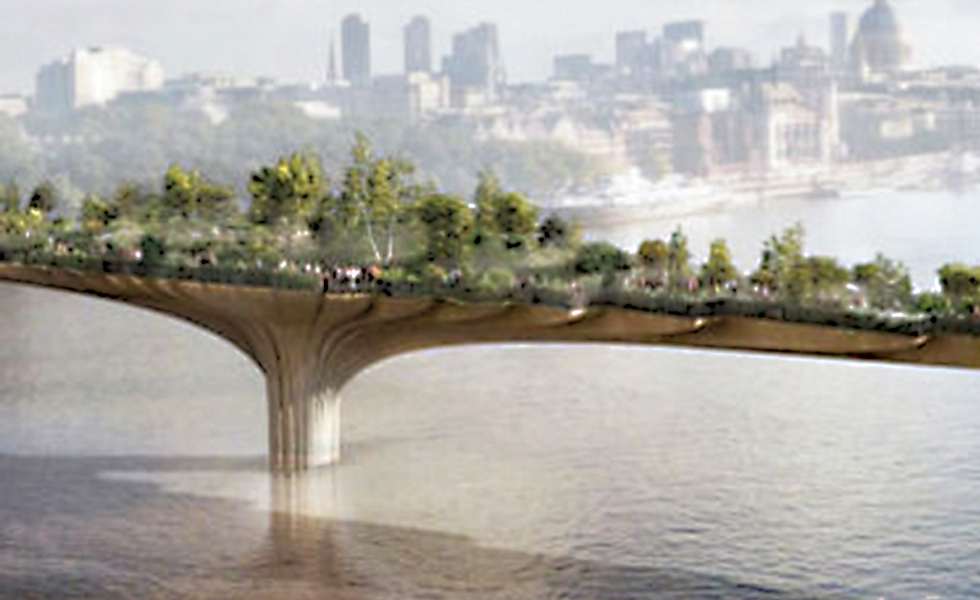With the construction contract signed for Joanna Lumley’s ‘Garden Bridge’, work is set to start in the summer on the footbridge that will span the Thames from the roof of Temple tube station to The Queen’s Walk on the South Bank.

By the end of 2018 Londoners should be able to wend their way through an expansive garden high up above the river. The official website for the Garden Bridge Trust claims it will provide “a quick and beautiful route across the river” as well as “a series of intimate spaces in which to stop and linger”. Despite this promised idyll for lingering wanderers and commuters alike, the proposals have divided public and political opinion.
The £175m project will rely on £30m of funding from the Department for Transport (DfT) as well as a £30m loan from Transport for London (TfL), with the rest from private sources.
Opponents argue that the bridge is in an area already well-served by crossings and is therefore an unjustified cost to the public; with many claiming it is just another Boris Johnson vanity project. Residents and interest-holders either side of the river have also raised concerns over the impact of crowds and the blocking of iconic views. The bridge has become a political hobbyhorse; Boris has strongly supported the project since its conception, with mayoral candidates and London MPs all voicing strong opinions on either side.
The principal permission for the bridge was granted in December 2014 and is now beyond challenge by judicial review so objectors have focused on the procurement process for the design of the bridge.
Public bodies are subject to stringent EU rules aimed at ensuring the procurement of public works contracts is open, fair and transparent. The DfT and TfL’s funding brings these rules into play. Opponents allege the process by which architect Thomas Heatherwick was selected was opaque and unfair. They question the relationship between Boris and Heatherwick, and claim that official documents obtained by Freedom of Information laws show the mayor favouring Heatherwick’s studio before the official tendering process.
This prompted a review of the procurement process by the GLA Oversight Committee. Its report, published in March, found there had been a series of “procedural errors”. Although the report suggests a number of recommendations going forward, the contract in question is still in place and initial work is still on course for this summer.
This project is an interesting example of how public infrastructure plans can become both contentious and political, and shows that a range of legal issues such as EU procurement rules can form an armoury for those seeking to delay delivery.

























